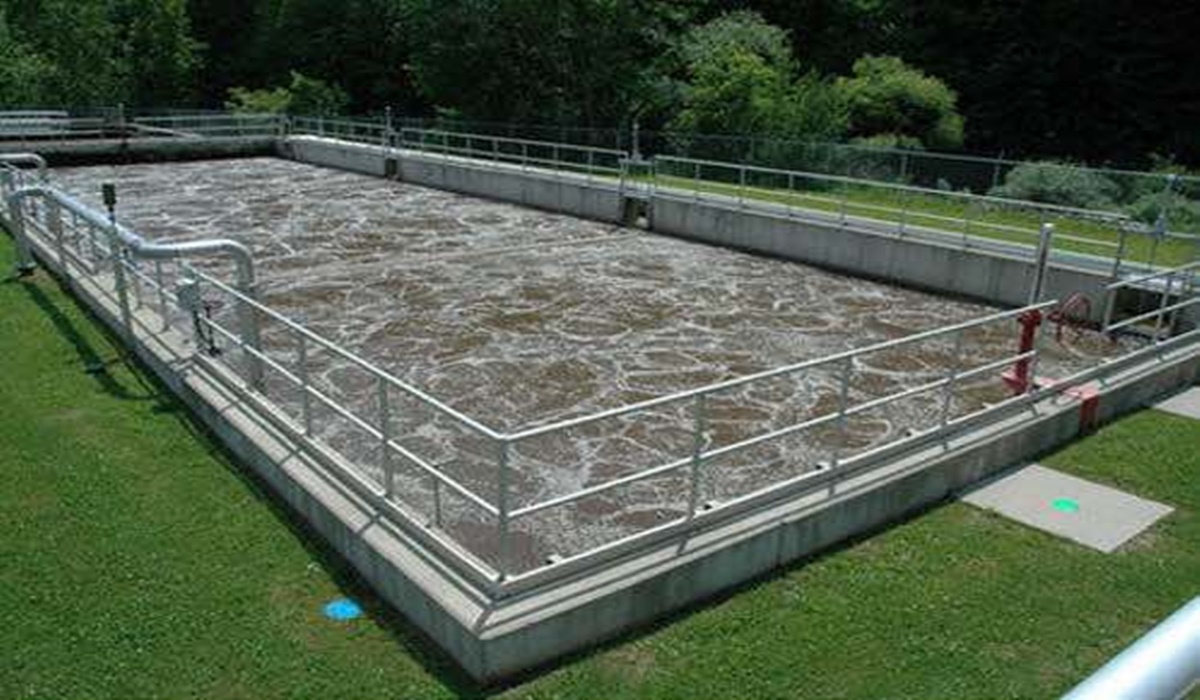Biological treatment processes are a crucial component in many wastewater treatment systems. They’re one of the foremost efficient and effective ways of reducing organic material within the wastewater. There are quite a few of them that are researched and used over several decades. However, one among the foremost widely used conventional biological treatment processes is that the activated sludge process (ASP). Many sewage treatment plants use ASP within their secondary treatment steps thanks to the human and animal organic matter in the inlet waters of wastewater treatment plants.
The term “activated sludge” comes from the very fact that the sludge contains live bacteria and protozoa that actively digest and break down sewage. it’s different from the sludge solids removed following a settling process therein way, with the addition of being odorless.
The process itself involves pumping the effluent from the first treatment clarification step into an outsized tank that contains the activated sludge. The mixture is subjected to aeration, either from submerged or surface aerators. This provides oxygen to the effluent that the bacteria can then use to interrupt down the organic waste. After a sufficient amount of hydraulic retention time, the resulting slurry is pumped into a clarification system or tank to settle out the remaining solids. The treated water is pumped far away from the highest to any subsequent polishing filtration and disinfection while the sludge at rock bottom is re-circulated back to the ASP tank to reseed the leftover activated sludge.
We have included the most potential disadvantages of the activated sludge process to be discussed below.
Hydraulic Retention Time
Perhaps the foremost important aspect of any wastewater treatment process is time. Any treatment solution needs time to run its course and certain treatments take longer than others. ASP is one of those solutions. Thanks to the ratio of sewage to sludge and the way the method occurs, the hydraulic retention time of ASP can take most of each day (12-24 hrs.) or up to many days (3-5) to realize appropriate levels of treatment results.
Sludge Retention Time / Recycling
Time also applies to the medium of the reaction. In this case, the medium is that the activated sludge. With regards to the sludge itself, an ASP is an open system and there’s a special mass rate entering the system than there’s exiting the system.
Overtime (without a recirculation system) all of the activated sludge within the tank would get pumped out. the thought is to maximize the time the sludge spends within the system. this point is to make sure there’s enough biomass to interrupt down the incoming organic matter; hence the necessity for recirculation.
Therefore, as most suspended growth biological processes or fixed film processes including MBBR have higher sludge retention times, ASP tends to possess lower sludge retention times.
Size
Due to both of the points stated above, reactor tanks for the activated sludge process (ASP) tend to be quite large so as to treat larger volumes of effluent. this needs large areas of land needed for his or her operation.
Changes in Volume or Character of Sewage
ASP can treat large quantities of varied organic materials, but the reaction depends on variables that make it quite vulnerable to an error in conditions outside of these it had been designed for.
In particular, changes in sewage volume and sewage characteristics may result in decreased treatment quality or treatment upsets. If a treatment plant decided it wanted to extend its treatment volume or began treating wastewater from a replacement and different source, the ASP reactors would typically be got to be completely redesigned accordingly.
Sludge Disposal
As are often expected from handling a treatment process that uses sludge to treat sewage, there are considerable volumes of sludge that require to be disposed of after this process. Larger sludge volumes mean higher associated disposal costs.
Operation / Supervision
Biology may be a complex subject; therefore, it stands to reason that a biological water treatment process would be complex in certain aspects. On a broad scale, the general process seems simple enough. However, the planning and operation of an Activated sludge reactor typically require experts in biological systems design to watch it. A system like this needs a touch more skilled supervision than simply watching out for mechanical failures and monitoring pH. There must be highly skilled operators and supervisors which will check for the viability and efficiency of the bacteria and protozoa within the sludge to stop system upsets.
Issues with Sludge Settling
Some of the most important issues with the activated sludge process reveal themselves in how everything settles call at the secondary clarification process. Sometimes, the solids don’t compact alright at rock bottom and therefore the sludge has high water content.
Sometimes, the supernatant (floating material) has higher turbidity than you would like which may affect the top effluent water quality. Other issues may result in decreased concentrations of return activated sludge.
For any queries and consultants regarding Sewage Treatment Plant and Effluent Treatment Plant or Commercial RO Plant, please call us on +91-9650608473 or you can write to us on enquiry@netsolwater.com.

